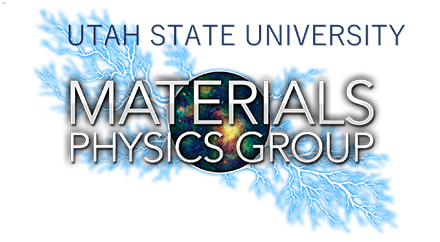Document Type
Presentation
Journal/Book Title/Conference
17th Spacecraft Charging and Technology Conference
Publication Date
6-19-2024
First Page
1
Last Page
34
Abstract
The mitigation of deleterious arcing and sparking onboard spacecraft depends upon a thorough understanding of the electrical properties of the materials involved. This includes not only understanding steady-state parameters such as dark conductivity, but responses to the space environment as well. For example, radiation-induced conductivity drastically changes the conductivity of a material due to the presence of radiation. However, this change in conductivity diminishes away once the radiation is no longer present. There may also be permanent changes, or aging, in the material properties. The physical processes of aging can be complicated and are often difficult to model. Therefore, empirical data are necessary to understand the aging effects of the space environment on materials. Experimentally mimicking radiation a spacecraft will be exposed to is often not feasible as there are several species of radiation with varying energies, incidental angles, and fluxes. Long-term aging tests are difficult as spacecraft are built to last several years. Clearly, years-long aging tests are not realistic. To accelerate the simulation of years-long missions, laboratory dose rates must typically be many orders of magnitude higher than would be encountered in space.
This study explored the effects of accelerated testing on the effects of aging experiments in the context of electrical properties of polymeric materials. Two ubiquitous spacecraft materials were tested, polyether-etherketone (PEEK) and polytetrafluoroethylene (PTFE). Several sets of samples were prepared with exposure to either electron (Sr90), gamma ray (Co60), or x-ray sources. The total ionizing doses were set at approximately 2x104, 2x105, and 2x106 rad, for low, medium, and high doses, respectively. Due to the differing radiation species, the dose rates varied from approximately 102 to 105 rad/hr. Once aged, the samples were bombarded with an 80 keV electron beam at 0.3 nA/cm2 for 2 minutes to embed electrons. The resulting embedded charge distributions were measured via the pulsed electroacoustic method to determine the charge transport characteristics as a function of dosing source, dose rate, and total ionizing dose. The samples were measured in a parallel plate configuration in three stages. The plates were grounded, biased to -16 kV/mm, then grounded again, each potential held for 10 minute intervals. Additionally, differential scanning calorimetry (DSC) and Fourier transform IR (FTIR) spectroscopy were measured.
PEEK does not appear to age significantly within the parameters employed in this study. Significant aging effects were observed in the resulting charge distributions and charge transport properties of aged PTFE. The DSC results correlate the changes in charge transport effects to differences in the change of enthalpy and crystallinity in pristine versus aged samples. It was observed that x-rays aged samples more rapidly, although this is likely due to the higher dose rate as compared to the other radiation sources.
Recommended Citation
Gibson, Zachary; Dennison, JR; and Griseri, Virginie, "Effects of Differing Radiation Methods on Charge Transport in Polymers" (2024). 17th Spacecraft Charging and Technology Conference. Presentations. Paper 210.
https://digitalcommons.usu.edu/mp_presentations/210



